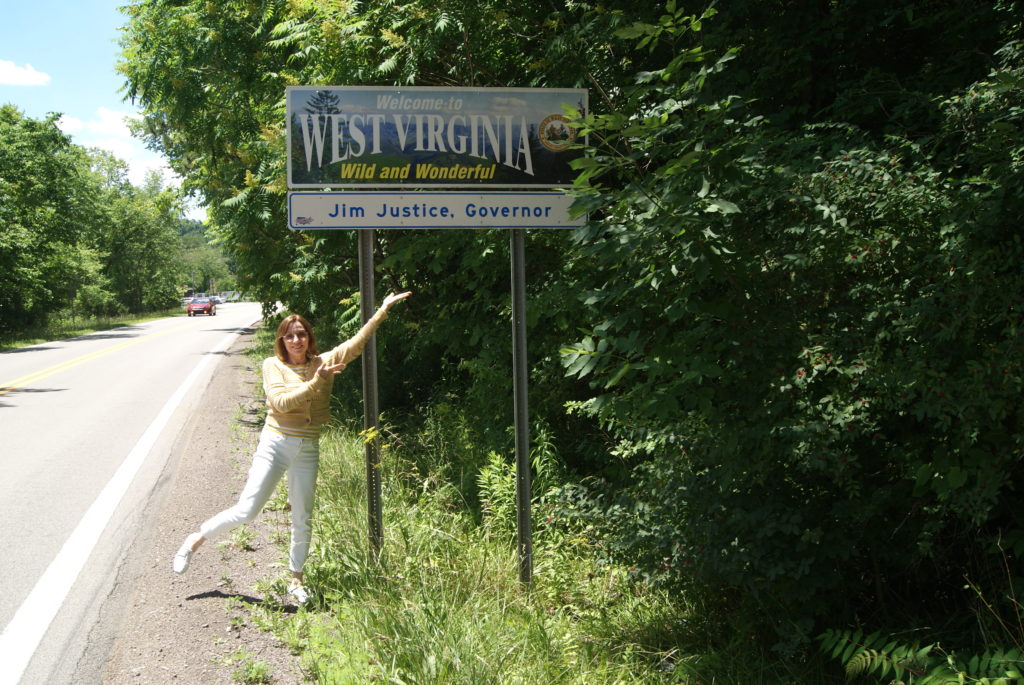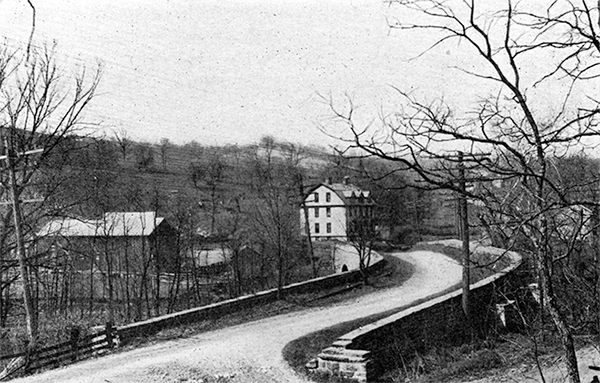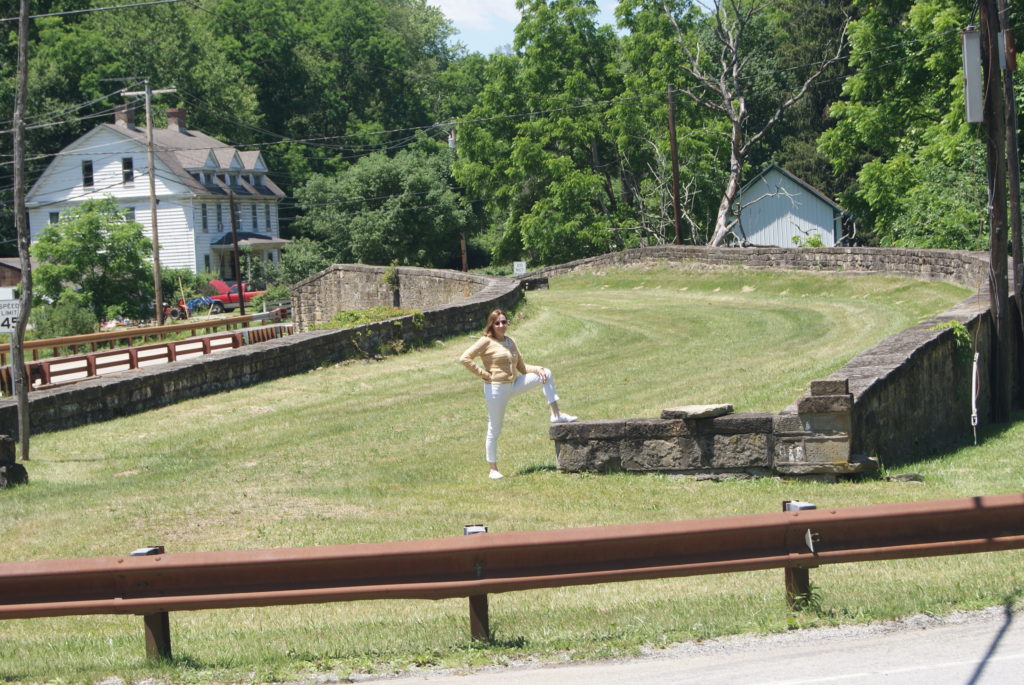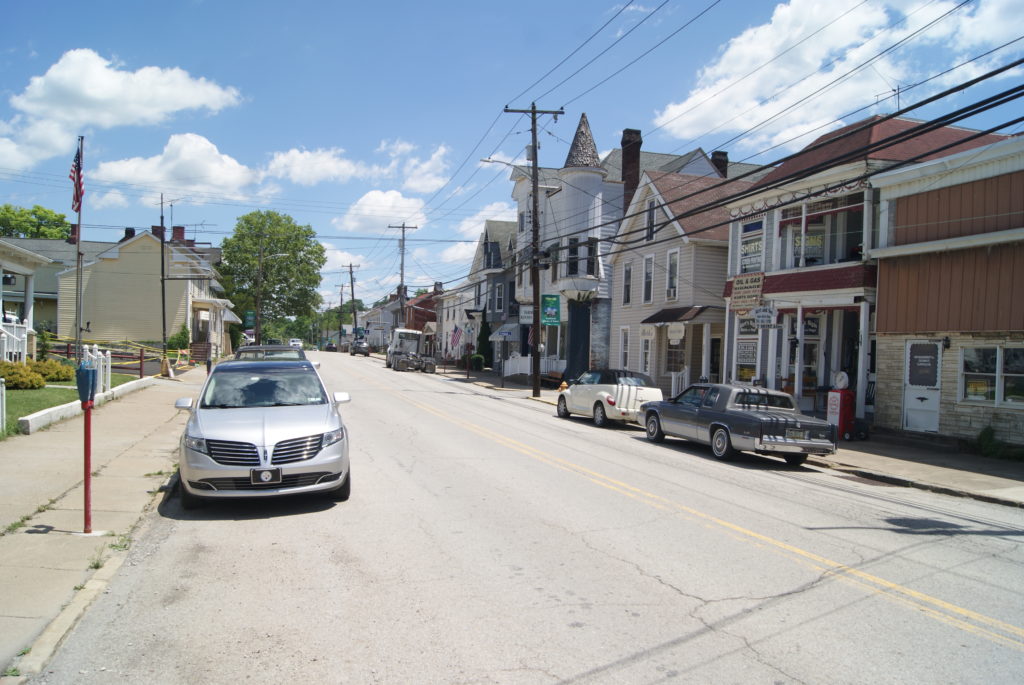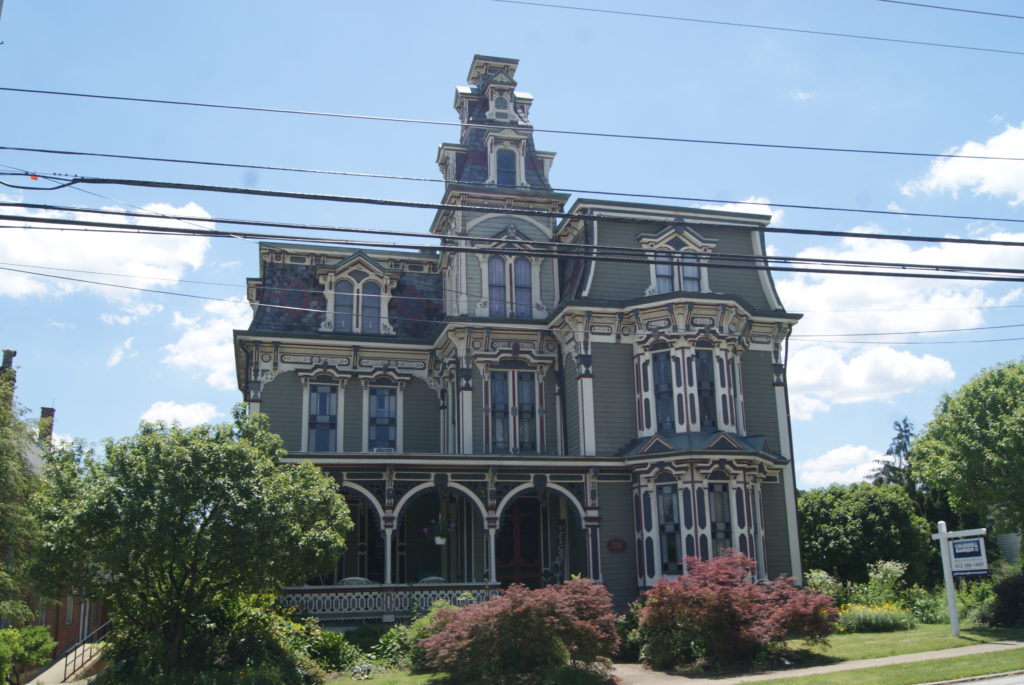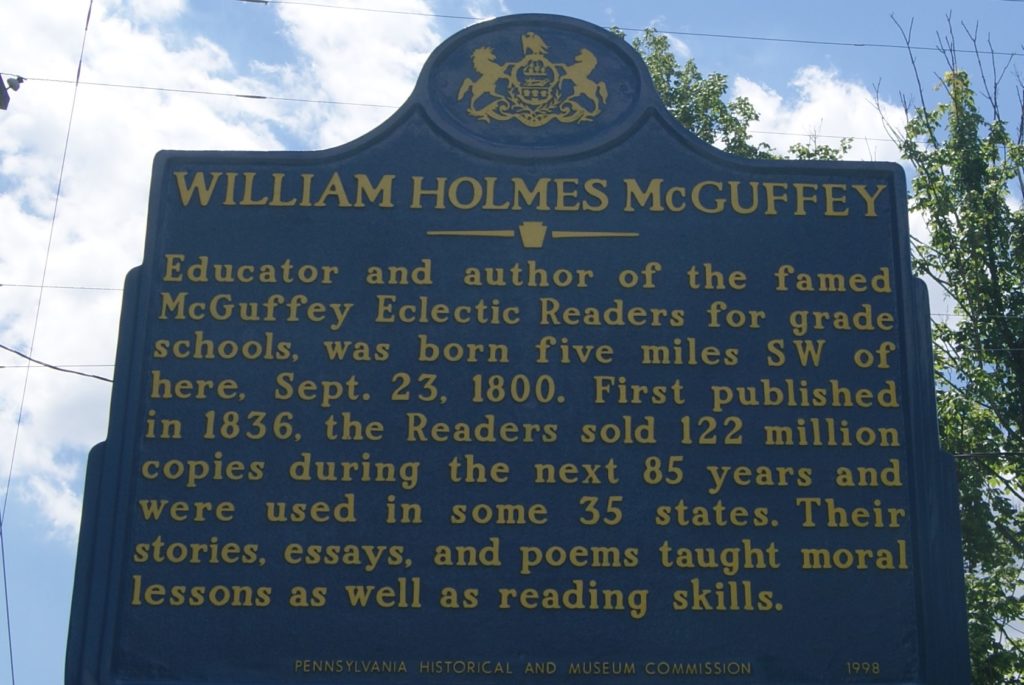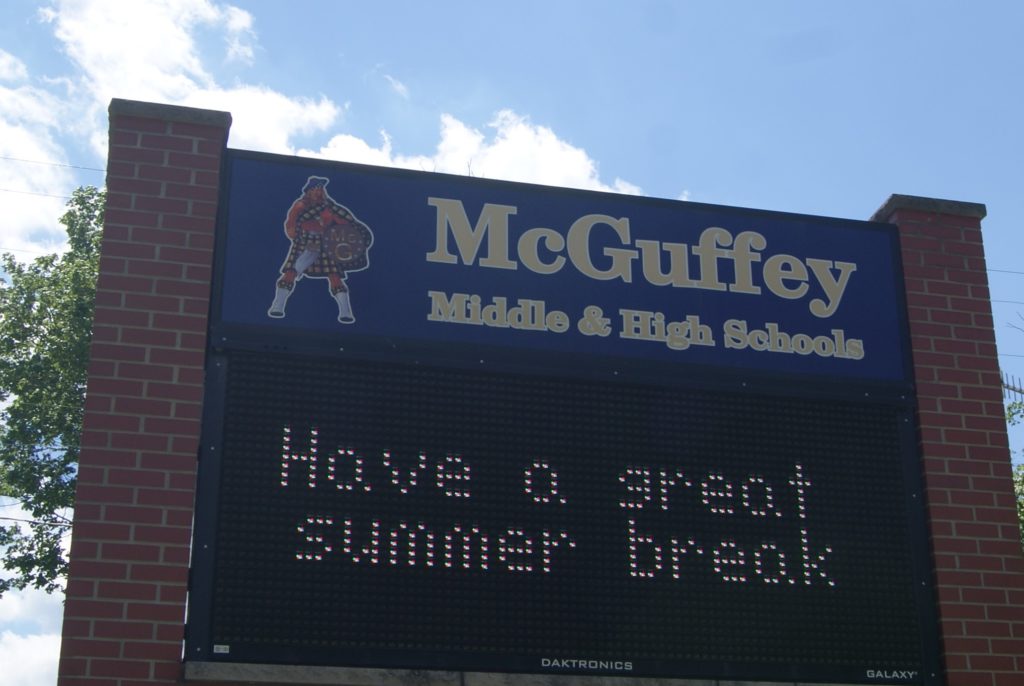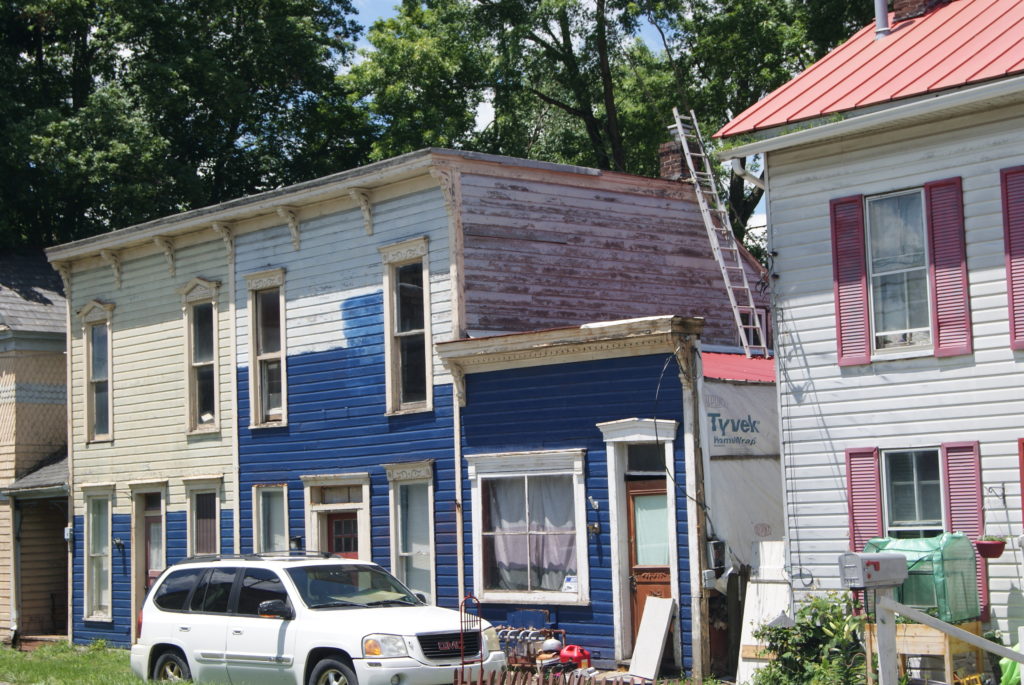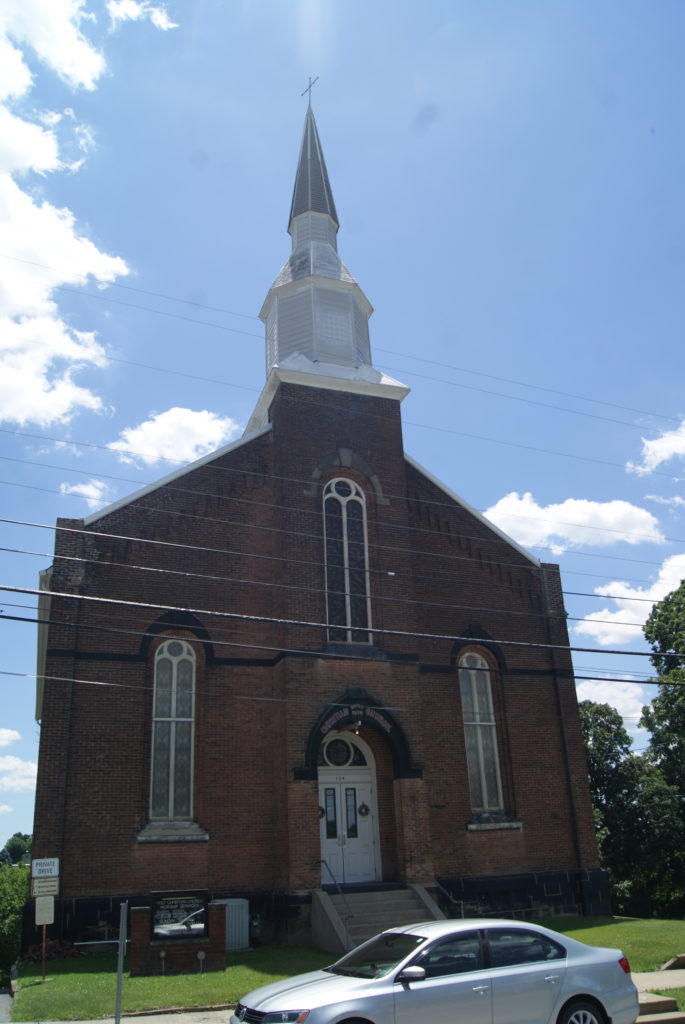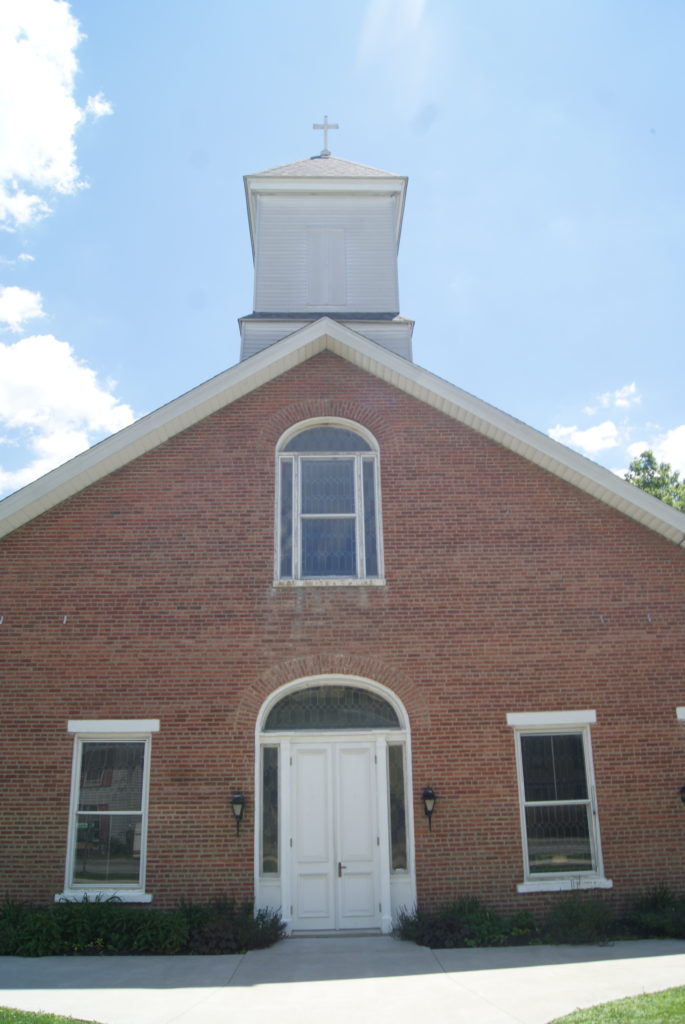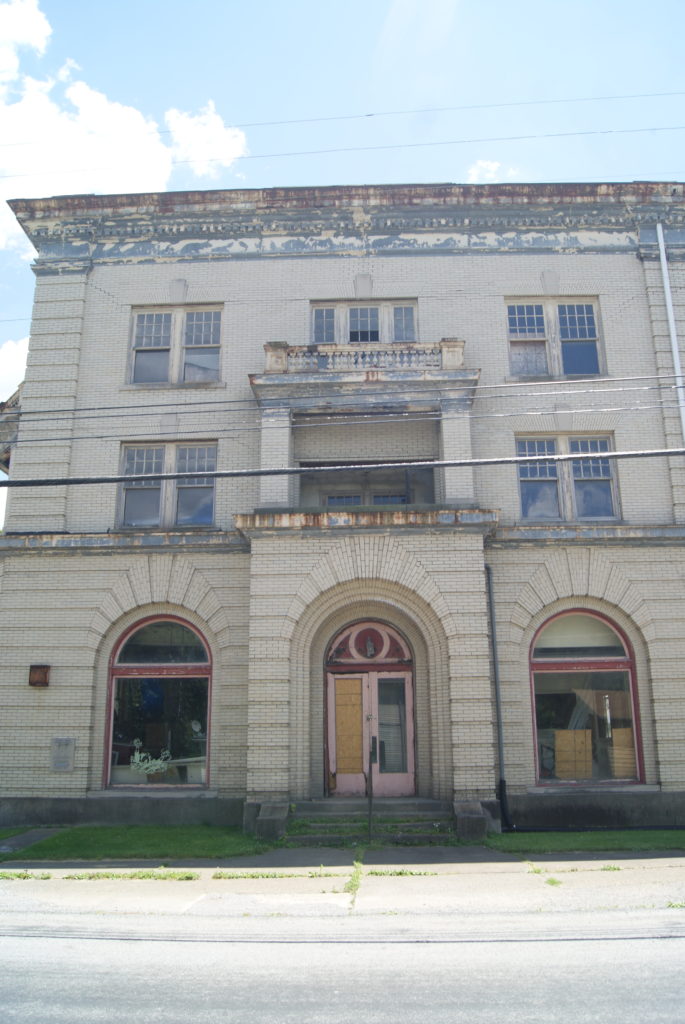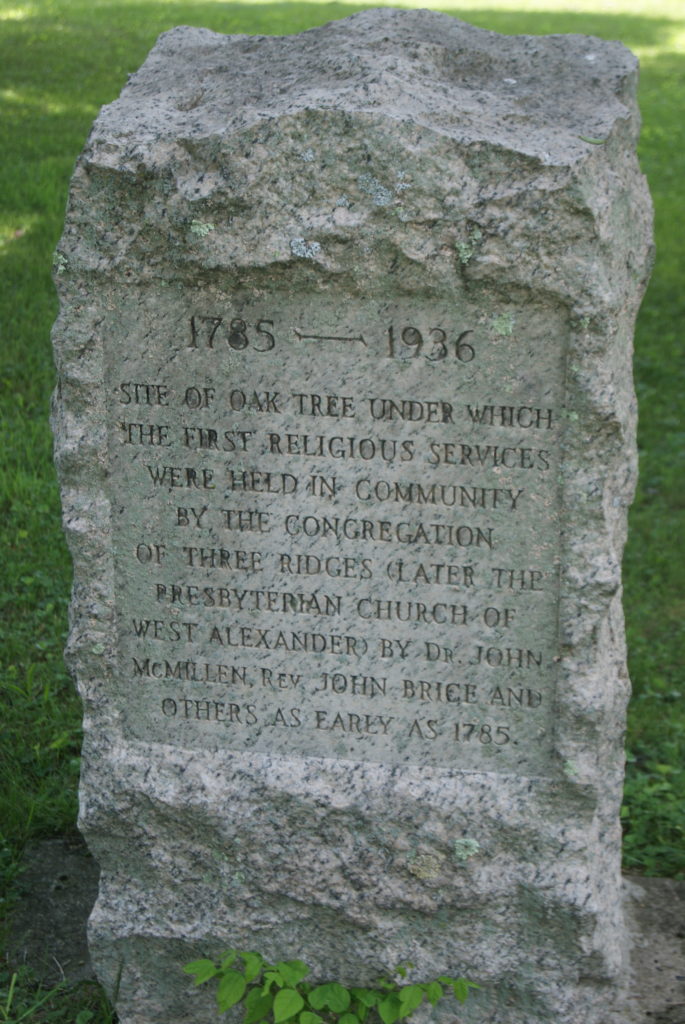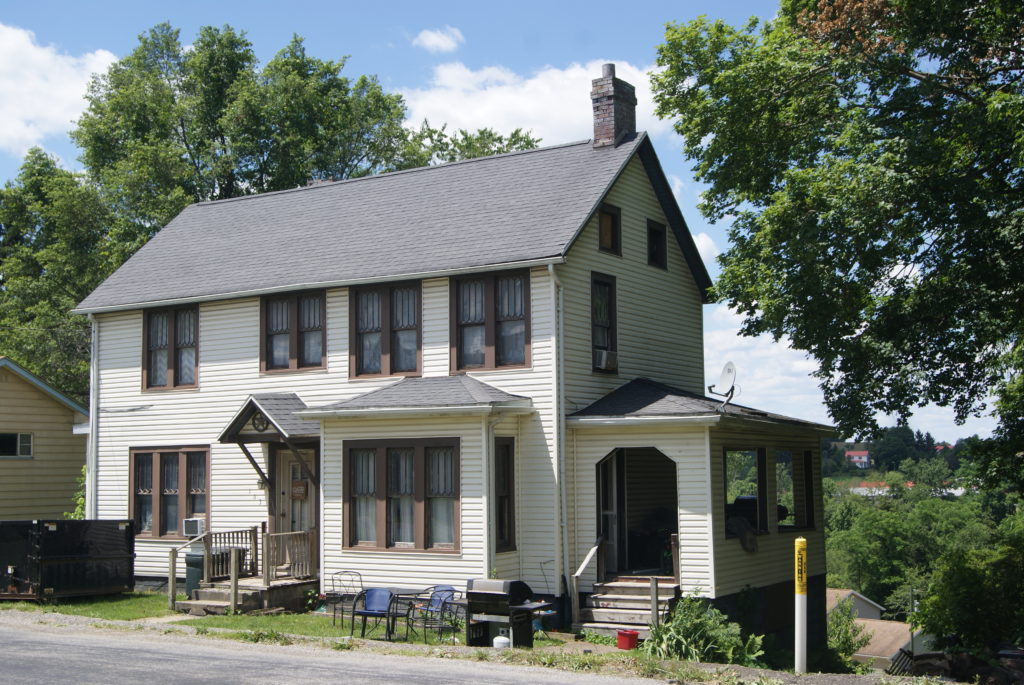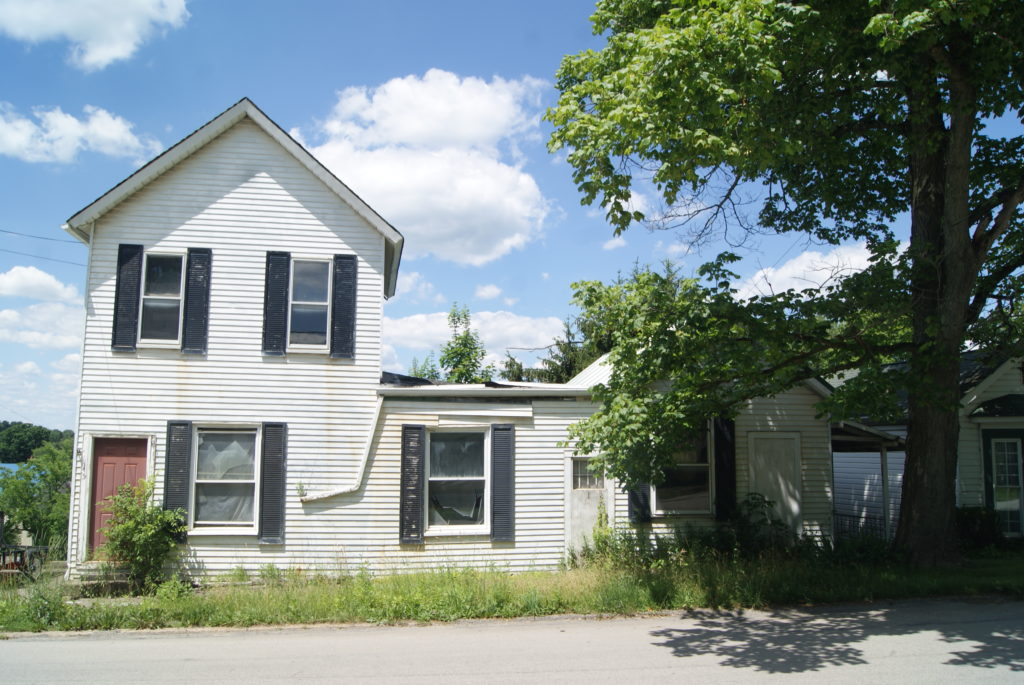I love people who are passionate and knowledgeable about something, whether it is clocks or old books or astronomy. I especially love people who are passionately interested in and knowledgeable about their own communities. In our travels along the National Road over the past few months, Al and I have met several people like that. And we met one on our most recent drive.
This week we made our last stops on the National Road in Pennsylvania, stopping at the S Bridge, passing through Claysville, and visiting West Alexander.
First, Lunch
We stopped in Washington, PA, on our way to this week’s destinations, and had lunch at Chicco Baccelo. We enjoyed our lunch there when we were in town last summer vising the David Bradford House. Once again, it did not disappoint. My Hannah wrap, iced chai latte and chocolate chip cookie, and Al’s Brenda Lou sandwich, hot chocolate and molasses cookie were delicious.
Some other places we enjoy in Washington:
The Union Grill. Cool speakeasy vibe and the BEST house-made chips!
Liberty Pole Spirits. Their distillery tour is so much fun that we’ve now taken it twice. This family-owned business is so very passionate about making whiskey.
The S Bridge
I had never heard of an S Bridge before, but it was a pretty common construction in the early nineteenth century. Builders usually used the S-bridge approach for a crossing small, curving stream with uneven banks, when the bridge had to cross the stream at an angle. The S is formed by constructing the bridge at 90% angle to the stream, with aprons on either bank, forming a letter S.
The 1815 S Bridge over Buffalo Creek, just outside Claysville, has been almost completely restored. The young man we met later in West Alexander told us about Gerald David McKenzie. McKenzie almost single-handedly saved this bridge. For years, he sat along the road near the bridge with an American flag, telling the story of the bridge to anyone who would stop and listen. Watch this YouTube video to hear an interview with McKenzie from 1994, and see the deterioration of the bridge at that time. Thanks to McKenzie’s efforts, the bridge was restored, through a combination of private donations and state funding.
Claysville
John Purviance, one of Claysville’s earliest farmers, also opened a tavern nearby as early as 1800. When he learned in 1817 that the planned National Road would cross his land, he saw opportunity. Purviance plotted out a town along the planned route of the road, and named it Claysville after U.S. Senator Henry Clay. Clay had been a strong proponent of public works like the National Road.
Like so many other towns along the National Road, Claysville thrived after the road came through in 1820. In the nineteenth century, the town was a regional agricultural service center. It was also home to businesses serving the oil and gas industry, and many other small businesses. The town has diminished since then, but it isn’t in the decrepit state of some other towns that we’ve seen in our travels. It’s a pleasant, small community that seems to be holding its own. Its Main Street still strings along the route of the old National Road, near Routes 40 and 70.
Claysville’s most famous native son is probably William Holmes McGuffy, who was born near Claysville in 1800. He authored the McGuffy Reader series, which was used almost universally in American schools in the nineteenth century. The local school district is named for him.
Pennsylvania’s Gretna Green
As so often happens to us when we explore small towns, on our last stop we met a friendly local person with lots of knowledge and enthusiasm.
Jeremy Wiley noticed us poking around in the graveyard in West Alexander and pointed us to the location of the oldest graves, and we got to talking to him. He owns the row of old two-story frame houses that used to form the nucleus of West Alexander’s quaint shopping district in the 1970s and 80s.
When I was young, I remember my mom going to West Alexander once or twice a year to shop for antiques and pottery. In the early 90s, part of the block burned in a fire, and the rest of the retro little business district never really recovered. Jeremy is now working towards combining the row of buildings into a wedding venue.
A wedding venue sounds like a pretty good bet for a community that was once known as Pennsylvania’s Gretna Green. Gretna Green is a town in Scotland, right on the border with England. Between 1754 and 1929, English law required parental consent for brides or grooms under the age of 21. Scotland had no such requirement. So, eager young couples often crossed the border to Gretna Green to marry. Similarly, West Alexander stands very close to Pennsylvania’s border with both Ohio and West Virginia. In the nineteenth century, Pennsylvania had no marriage-license laws at all, and West Alexander became a popular elopement destination for couples from Ohio and West Virginia, where the laws were stricter.
West Alexander History
Robert Humphrey founded the town of West Alexander in 1792 and named it after his wife, Martha Alexander. Once the National Road came through in 1820, the town boomed, with as many as 25 stagecoach stops daily.
Jeremy’s buildings date to the 1840s, right after West Alexander’s first disastrous fire in 1831. He’s found newspapers in his cellar dating as far back as 1875. He believes that his buildings rest on the foundations of older buildings that were destroyed in the 1831 fire, and that the stone chimneys also predate the fire. Jeremy and his wife have found remnants of the old foundations in his basements, and charcoal that is probably what remains of the old wooden buildings. He also found the old stacked-stone wells in his backyards, and has dug out one of them, to find it filled with discarded bottles. Jeremy is still finding old pottery molds as he cleans out the portion of his property that was the pottery shop. If anyone want pottery molds, he is giving them away for free. Contact him at jeremyhaydenwiley@yahoo.com.
Jeremy also showed us the marker that indicates where the first church service was held outdoors in 1790. It stands in the graveyard, below and to the left of the current church.
West Alexander Architecture
The West Alexander graveyard is lovely and peaceful, right between the town’s two churches. Similar to Beallsville, much of the old architecture in West Alexander is still intact, in spite of at least two major fires.
West Alexander’s Future
The people of West Alexander are making a strong effort to improve their town. Jeremy is working on his property, a community center recently opened along the main street, and the recreation committee is fund-raising for a community playground. The owner of the old bank building (see above) seeks to renovate the building into condos or apartments, and even hopes to re-open the theater that once graced the top floor. Al and I thoroughly enjoyed our visit to this pretty little community, and plan to stop back and check on its progress.
COMING NEXT: Now that we’ve completed our drive along Pennsylvania’s section of the National Road, it’s on to West Virginia and beyond!
Sources
https://old.post-gazette.com/neigh_washington/20030504wacover0504p2.asp
Vivian, Cassandra. The National Road in Pennsylvania. Charleston, SC: Arcadia Publishing, 2003.

